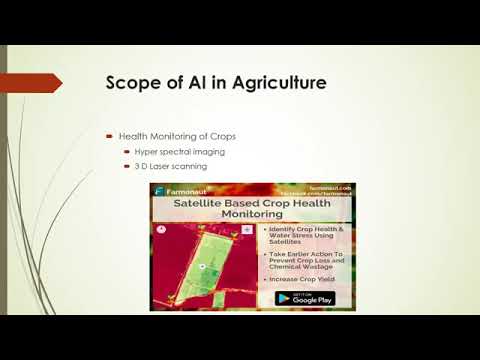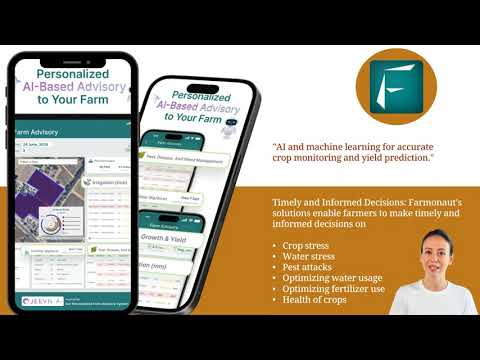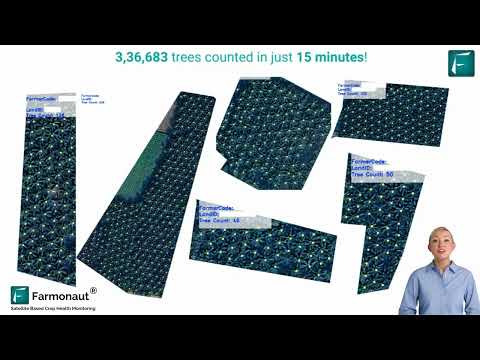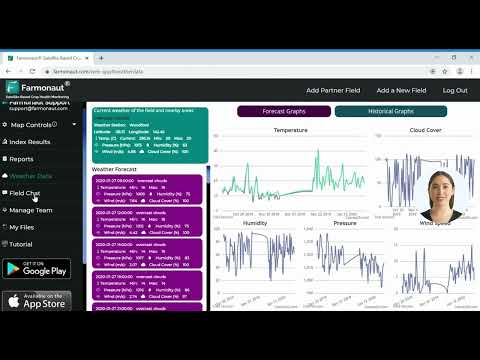Revolutionizing Farming in West Lafayette: How AI and Smart Sensors Are Transforming Agriculture
“AI-powered sensors can monitor soil conditions across acres of farmland, potentially revolutionizing crop management by 2030.”
In the heart of Indiana, a technological revolution is taking root that promises to transform the way we approach farming. West Lafayette, home to Purdue University, is at the forefront of this agricultural renaissance, where artificial intelligence (AI) and smart sensors are ushering in a new era of precision agriculture. As we delve into this exciting frontier, we’ll explore how these cutting-edge technologies are set to revolutionize crop farming, enhance decision-making processes, and pave the way for more sustainable agricultural practices.
The Dawn of AI in Agriculture
Artificial intelligence in agriculture is no longer a concept of the distant future—it’s happening right now in the fields of West Lafayette and beyond. At Purdue University, researchers are developing advanced sensors that can monitor soil moisture, nutrients, and other vital factors across vast expanses of farmland. These precision agriculture technologies are not just impressive; they’re transformative, offering farmers unprecedented insights into their crops and soil conditions.
David Love, the Nick Trbovich professor of electrical and computer engineering at Purdue, paints a picture of the future: “Right now, a soil moisture sensor, you’d have about 1 of those per 100 acres. In the future, you might have hundreds, or even more, per acre.” This dramatic increase in data points will provide farmers with a level of detail and understanding that was previously unimaginable.
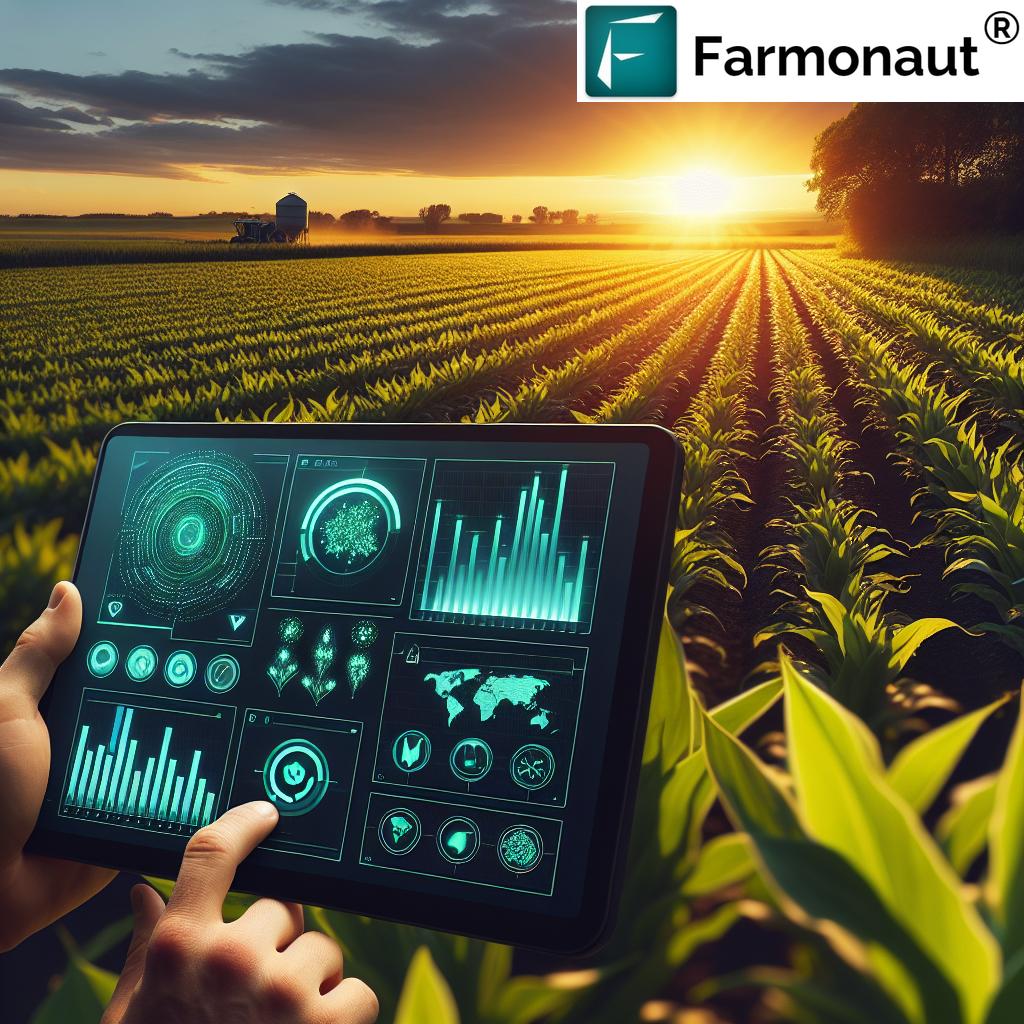
Smart Soil Sensors: The Foundation of Data-Driven Farming
The cornerstone of this agricultural revolution lies in the development and deployment of smart soil sensors for farming. These devices are not your average thermometers or moisture meters. They are sophisticated pieces of technology capable of gathering a wealth of data about the soil and environmental conditions. Let’s break down what these sensors can do:
- Monitor soil moisture levels with pinpoint accuracy
- Measure nutrient content and pH levels
- Detect the presence of pests or diseases
- Track temperature and humidity
- Assess soil compaction and structure
But the true power of these sensors lies not just in their ability to collect data, but in how that data is used. This is where AI crop management systems come into play, analyzing vast amounts of information to provide actionable insights to farmers.
AI Crop Management: Turning Data into Decisions
With the influx of data from smart sensors, farmers need sophisticated tools to make sense of it all. AI crop management systems are designed to do just that. These systems can:
- Analyze soil health trends over time
- Predict potential issues before they become problems
- Recommend optimal planting and harvesting times
- Suggest precise fertilizer and pesticide applications
- Optimize irrigation schedules
Dennis Buckmaster, professor of agriculture at Purdue University, explains the significance: “There’s so much data that sometimes we’re just buried in it, and we don’t have time to analyze it. That’s where we can leverage artificial intelligence.”
The Promise of Precision Agriculture Technology
Precision agriculture technology is not just about collecting data; it’s about using that data to make smarter, more efficient decisions. By leveraging AI and smart sensors, farmers can:
- Reduce water usage through targeted irrigation
- Minimize fertilizer application while maximizing crop yields
- Decrease pesticide use through early detection of pests and diseases
- Improve soil health through better management practices
- Increase overall farm productivity and profitability
The potential impact of these technologies is enormous. By 2030, we could see a dramatic shift in how farms operate, with AI-powered systems guiding every aspect of crop management.
Data-Driven Farming: A New Paradigm
Data-driven farming represents a paradigm shift in agriculture. Instead of relying on traditional methods and gut instincts, farmers can now make decisions based on real-time, accurate data. This approach offers several benefits:
- Increased crop yields
- Reduced environmental impact
- Enhanced food quality
- Improved resource management
- Greater resilience to climate change
As we embrace this new era of farming, tools like those offered by Farmonaut become increasingly valuable. Farmonaut’s satellite-based farm management solutions provide farmers with access to advanced crop monitoring and AI-driven advisory systems, making precision agriculture more accessible than ever.
Agricultural AI Applications: Beyond the Field
While much of the focus is on in-field applications, agricultural AI extends far beyond the farm. Some exciting applications include:
- Supply chain optimization
- Predictive maintenance for farm equipment
- Automated grading and sorting of produce
- Climate modeling and weather prediction
- Market trend analysis for crop pricing
These applications demonstrate the far-reaching potential of AI in revolutionizing not just farming practices, but the entire agricultural industry.
Soil Moisture Monitoring: The Key to Efficient Water Use
One of the most critical aspects of precision agriculture is efficient water management. Soil moisture monitoring through smart sensors allows farmers to:
- Determine optimal irrigation schedules
- Prevent over-watering and water waste
- Reduce the risk of crop stress due to drought
- Improve crop quality and yield
- Conserve water resources
With water scarcity becoming an increasingly pressing issue, technologies that enable precise soil moisture monitoring are invaluable for sustainable agriculture.
“Precision agriculture technologies aim to increase crop yields while reducing fertilizer, water, and pesticide usage through data-driven farming techniques.”
Efficient Fertilizer Use in Farming: Precision and Sustainability
Efficient fertilizer use is another area where AI and smart sensors are making a significant impact. By providing detailed soil nutrient data, these technologies enable:
- Precise application of fertilizers based on crop needs
- Reduction in overall fertilizer usage
- Minimization of nutrient runoff and environmental impact
- Optimization of crop nutrition for better yields
- Cost savings for farmers
This level of precision not only improves crop performance but also contributes to more sustainable farming practices.
AI Pest Detection in Crops: Early Warning System
Pest management is a critical aspect of farming, and AI is revolutionizing how we approach it. AI-powered pest detection systems can:
- Identify pest infestations at early stages
- Differentiate between harmful and beneficial insects
- Recommend targeted pest control measures
- Reduce the need for broad-spectrum pesticides
- Minimize crop losses due to pest damage
By catching pest issues early, farmers can take swift action, potentially saving entire crops from devastation.
Sustainable Farming Practices: AI as a Catalyst
The integration of AI and smart sensors is paving the way for more sustainable farming practices. These technologies enable:
- Reduced use of chemical inputs
- Conservation of water resources
- Improved soil health management
- Decreased carbon footprint of farming operations
- Enhanced biodiversity through targeted interventions
As we face the challenges of climate change and environmental degradation, these sustainable practices become increasingly crucial for the future of agriculture.
The Role of Farmonaut in Modern Agriculture
In this landscape of technological advancement, Farmonaut stands out as a pioneer in making precision agriculture accessible to farmers worldwide. Their platform offers:
- Satellite-based crop health monitoring
- AI-driven advisory systems
- Real-time insights for informed decision-making
- Tools for efficient resource management
- Solutions for various scales of farming operations
By leveraging these technologies, farmers can tap into the power of data-driven agriculture without the need for expensive on-ground equipment.
Overcoming Challenges in AI Adoption
While the benefits of AI and smart sensors in agriculture are clear, there are challenges to widespread adoption. These include:
- Initial costs of implementing new technologies
- The need for digital literacy among farmers
- Concerns about data privacy and security
- Integration with existing farm equipment and practices
- Ensuring reliable internet connectivity in rural areas
Addressing these challenges will be crucial for the continued growth and success of AI in agriculture.
The Future of Farming: AI and Beyond
As we look to the future, the potential for AI and smart sensors in agriculture seems boundless. Some exciting prospects include:
- Autonomous farm equipment guided by AI
- Vertical farming optimized by AI systems
- Genetic engineering informed by AI analysis
- AI-driven crop breeding for enhanced resilience
- Integrated farm management systems powered by AI
These advancements promise to make farming more efficient, sustainable, and capable of meeting the growing global demand for food.
AI-Powered Agricultural Sensors Comparison
| Sensor Type | Measured Parameters | Data Collection Frequency | AI Analysis Capabilities | Potential Benefits for Farmers |
|---|---|---|---|---|
| Soil Moisture Sensors | Water content, temperature | Hourly | Irrigation optimization, drought prediction | 20-30% water savings, improved crop health |
| Nutrient Sensors | NPK levels, pH, organic matter | Daily | Fertilizer recommendation, soil health analysis | 15-25% reduction in fertilizer use, increased yield |
| Pest Detection Sensors | Insect presence, disease indicators | Continuous | Early pest/disease detection, treatment suggestions | Up to 40% reduction in crop losses, decreased pesticide use |
| Weather Stations | Temperature, humidity, rainfall, wind | Every 15 minutes | Microclimate modeling, harvest timing optimization | Improved crop quality, 10-15% increase in yield |
| Crop Health Sensors | Chlorophyll content, leaf area index | Daily | Growth stage analysis, yield prediction | Early stress detection, 20-30% increase in productivity |
Empowering Farmers with Knowledge
As we embrace these new technologies, it’s crucial to empower farmers with the knowledge and skills to leverage them effectively. This includes:
- Training programs on AI and data analysis
- User-friendly interfaces for AI-powered tools
- Collaboration between tech experts and agricultural professionals
- Ongoing support and education for farmers
- Community-based learning and knowledge sharing
By focusing on education and accessibility, we can ensure that the benefits of AI in agriculture are widely realized.
Earn With Farmonaut: Affiliate Program
Earn 20% recurring commission with Farmonaut’s affiliate program by sharing your promo code and helping farmers save 10%. Onboard 10 Elite farmers monthly to earn a minimum of $148,000 annually—start now and grow your income!
The Environmental Impact of AI in Agriculture
One of the most promising aspects of AI and smart sensors in agriculture is their potential to reduce the environmental impact of farming. By enabling more precise resource management, these technologies can:
- Reduce greenhouse gas emissions from agricultural activities
- Minimize chemical runoff into waterways
- Preserve soil health and biodiversity
- Decrease water consumption in agriculture
- Promote sustainable land use practices
As we face the challenges of climate change, these environmental benefits become increasingly crucial.
The Economic Implications of AI-Driven Agriculture
The adoption of AI and smart sensors in agriculture has significant economic implications. While there are initial costs to implement these technologies, the long-term benefits can include:
- Increased farm profitability through improved yields and resource efficiency
- Creation of new job opportunities in agtech and data analysis
- Development of new markets for AI-powered agricultural tools
- Potential for smaller farms to compete more effectively
- Reduced reliance on government subsidies as farm efficiency improves
These economic benefits could help revitalize rural communities and strengthen the agricultural sector as a whole.
Farmonaut: Bridging the Gap Between Technology and Agriculture
In the rapidly evolving landscape of agricultural technology, Farmonaut stands out as a company that’s making precision agriculture accessible to farmers of all scales. Their platform offers:
- Satellite-based crop monitoring for real-time insights
- AI-driven advisory systems for optimized decision-making
- User-friendly mobile and web applications
- Integration with existing farm management practices
- Affordable solutions that democratize access to advanced agricultural technologies
By leveraging Farmonaut’s tools, farmers can tap into the power of AI and satellite technology without the need for extensive on-ground infrastructure.
Explore Farmonaut’s API | API Developer Docs
FAQ: AI and Smart Sensors in Agriculture
Q: How accurate are AI predictions in agriculture?
A: AI predictions in agriculture can be highly accurate, often exceeding 90% accuracy for crop yield predictions and pest detection when provided with quality data from smart sensors and satellite imagery.
Q: Can small-scale farmers benefit from these technologies?
A: Yes, platforms like Farmonaut make AI and satellite-based monitoring accessible to farmers of all scales, providing affordable solutions that can significantly improve farm management and productivity.
Q: How does AI help in water conservation?
A: AI analyzes data from soil moisture sensors and weather forecasts to optimize irrigation schedules, ensuring crops receive precisely the amount of water they need, thus reducing waste and improving water use efficiency.
Q: What role does blockchain play in AI-driven agriculture?
A: Blockchain technology can enhance traceability in the food supply chain, providing transparency and security for data collected by AI and smart sensors throughout the farming process.
Q: How can farmers get started with AI and smart sensors?
A: Farmers can begin by exploring platforms like Farmonaut, which offer user-friendly interfaces and guidance on implementing AI-driven solutions in their operations. Starting with satellite-based crop monitoring is often a good first step.
Conclusion: A New Era of Smart, Sustainable Farming
As we’ve explored throughout this article, the integration of AI and smart sensors in agriculture represents a paradigm shift in how we approach farming. From the fields of West Lafayette to farms across the globe, these technologies are revolutionizing crop management, enhancing decision-making processes, and paving the way for more sustainable agricultural practices.
The future of farming is data-driven, precise, and increasingly sustainable. By embracing these technologies, we can work towards a future where agriculture not only meets the growing global demand for food but does so in a way that preserves our environment and resources for generations to come.
As we look ahead to 2030 and beyond, the potential for AI and smart sensors in agriculture seems boundless. With continued research, development, and adoption of these technologies, we stand on the cusp of an agricultural revolution that promises to transform not just how we grow food, but how we interact with our planet’s resources.
The journey towards this future is already underway in places like West Lafayette, and with tools like those offered by Farmonaut, it’s becoming increasingly accessible to farmers everywhere. As we move forward, let’s embrace the power of AI and smart sensors to create a more efficient, sustainable, and productive agricultural sector for the benefit of all.
